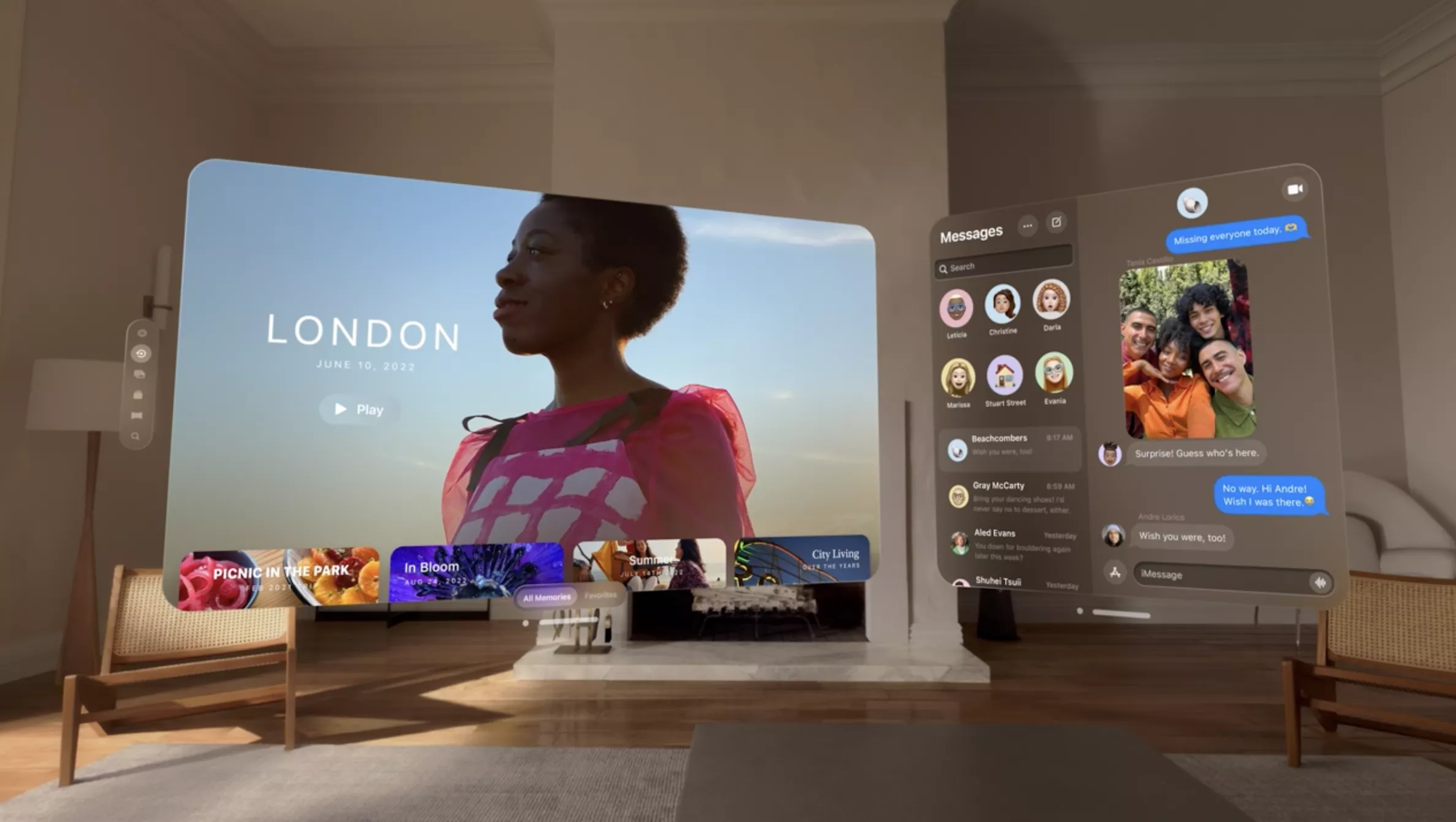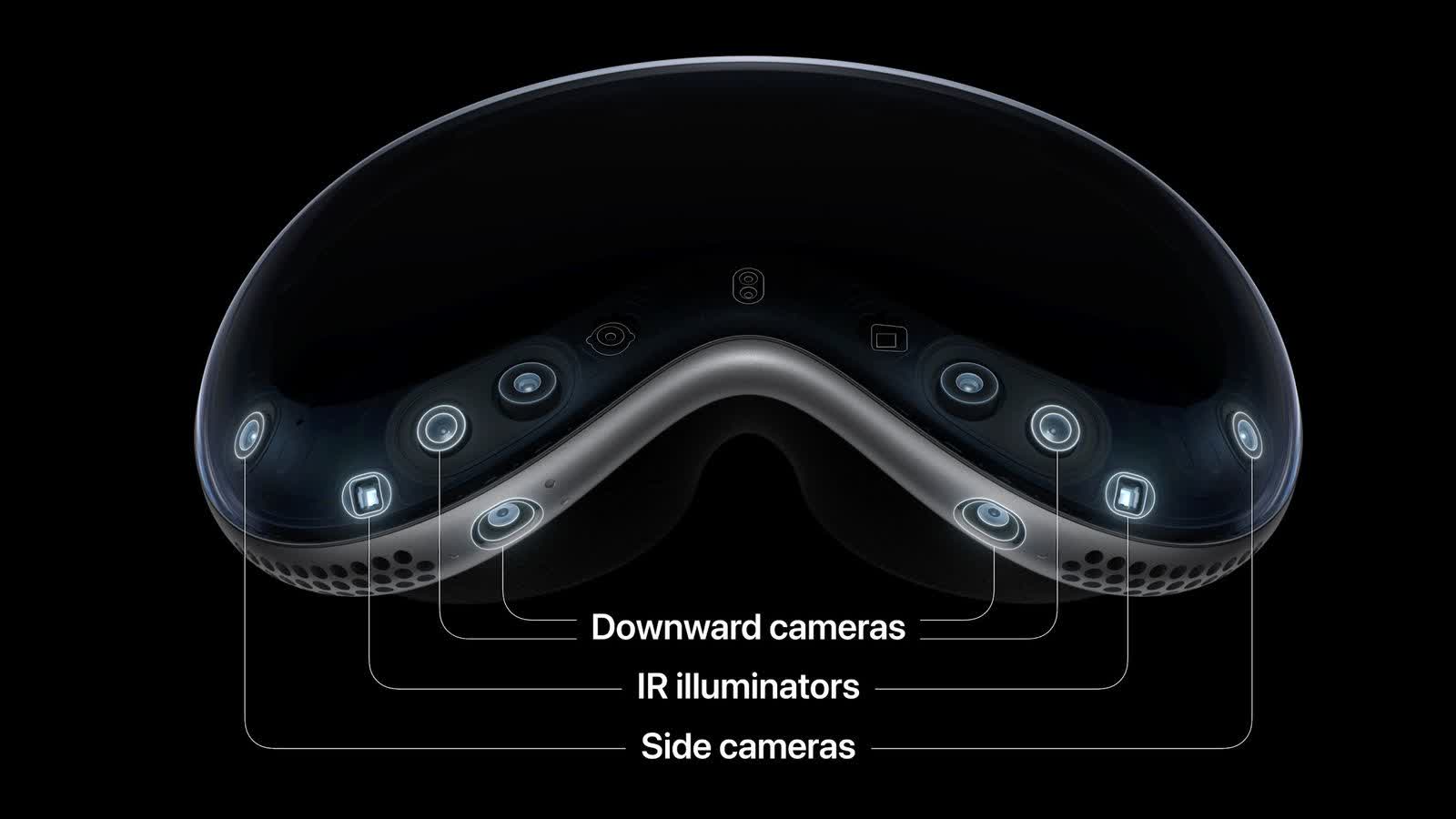Editor's take: I was one of the lucky few who got to attend Apple's WWDC keynote presentation in person, and also got to try the new Apple Vision Pro headset for a 25-minute hands-on, er, heads-on demo. The experience was very good – as it certainly should be for a product that's going to cost a whopping $3,499 – but it was also a bit more similar to other devices I've tried over the years than I initially expected it to be.
Apple Vision Pro is the company's first truly new computing platform device, and the biggest change in physical form factor, in about 10 years. While it looks to most people like the augmented reality (AR) and virtual reality (VR) headsets that we've seen companies like Meta, Microsoft, Magic Leap, Samsung, Lenovo and others introduce over the last few years, Apple refers to Vision Pro as a spatial computing device.
The idea is that Vision Pro's extremely high-resolution display along with its natural user interface let you see and manipulate digital content of all types in the space in front of you. Practically speaking, that means it functions like a virtual monitor onto which you can place everything from traditional iOS apps to applications running on your Mac to immersive photos, videos and more.
At its best, Vision Pro offers a hyper-realistic perspective. The full-room screen size and spatial audio features combined with immersive video content specifically created for the device can make it feel like you're experiencing something in person – whether that's exploring a remote mountaintop, diving with sharks, watching live sports, and much more.
Applications such as Apple's interactive dinosaurs demo provide a means to view and even do simple interactions with digital objects floating in front of you. Additionally, 3D movie content like the second Avatar movie that Apple demoed surpasses anything you've ever seen in a theater or theme park experience.
The problem is that it can all be a bit overwhelming. Like with existing AR and VR headsets, the initial demo with Vision Pro is super impressive – and for those who haven't tried previous VR iterations, the experience can be even more mind-blowing. But once the roughly 25-minute demo was over, I was perfectly content with it being done.
Now, this probably was due in part to the fact that Apple was trying to squeeze in a lot of different examples in a short time frame. But it also reminded me of why I've never been a big long-term fan of computing devices that sit on my face and cover my eyes. They can get visually and mentally draining fairly quickly.
This problem isn't unique to Apple. In fact, Apple's integration of the many different technologies required to bring a product like Vision Pro to life is very impressive. I noticed none of visual delay-based challenges that cause motion sickness issues in other types of VR headsets, for example. This is likely thanks to the new Apple-designed R1 chip whose purpose is to integrate the camera and sensor data from all the various elements that are built into the Vision Pro's design.
However, it's not clear that Vision Pro can overcome the challenges of the category. For many people, the product is likely to be something that they find initially amazing, but quickly start to tire of. The 2-hour battery limit from the wired, deck of card-sized battery pack that powers the Vision Pro certainly won't help either, but I'm very curious to see how long people want to use the device for a given session anyway. (For longer sessions, the device can be plugged into the wall, but this obviously limits mobility.)
Of course, this will all depend on the types of applications that get developed for Vision Pro. Many of them initially seem compelling, including 3D photos and videos that you can capture directly from the Vision Pro's built-in camera. However, several others felt like revisits of concepts that seemed very cool on products like the Magic Leap and Hololens, but turned out to be not that useful in real-world use.
One thing I was surprised by was the relative lack of demos that used 3D modeled objects that could overlay your view of the real world. One of the key benefits of Vision Pro is its passthrough video view, which allows you to clearly see the real-world (and people) around you when you don't have apps or other content in the virtual screen in front of you. But despite Apple's six years of work on AR Kit for iPhone and iPad developers, there weren't a lot of examples of that in the demos that Apple showed.
The biggest surprise for me about the Vision Pro was that it felt more like a fully immersive VR headset experience than I expected it to be. Traditionally, VR is defined as a completely immersive screen experience where the real world is obscured. AR, however, is typically thought of as primarily a real-world view with a few digital objects placed within that environment.
Many of the Vision Pro demos and much of the brief time I spent with the device fused these two concepts into what's often called mixed reality (MR). Although there were elements of real-world visibility, most of it felt VR-like. From the device's initial setup onwards, my experiences with VR headsets kept coming to mind.
Ironically, some of the most impressive experiences offered by Vision Pro were owed to the extraordinarily high-quality screens inside the device. The Environments app, which provides a 360-degree view of various nature scenes, complete with spatial audio, was amazing. However, Apple (and many others in the industry) have been attempting to move away from VR and concentrate more on AR due to the visually exhausting and sometimes disorienting nature of VR experiences.
All of this echoes some of my initial concerns. It's clear that Apple has invested substantial time and effort into Vision Pro, and it shows in numerous impressive ways. Moreover, there are countless features, like the Eyesight view for indicating to others that you're observing them through the lenses, and digital avatars for Facetime calls that I don't have the space to get into. The company also didn't showcase any demos with Siri-based voice control – a feature that could either be a great enhancement (particularly if driven by an updated AI-enhanced version of Siri) or a frustrating disappointment if it still uses the current version of Siri.
At the end of the day, I'm not fully convinced this story hasn't been told before and that it won't conclude with the same modest impact that other similar products have had. To its credit, the technology in Apple's Vision Pro surpasses any previous iterations of spatial computing devices, but the long-term impact for the company and the category remains to be seen.
Bob O'Donnell is the founder and chief analyst of TECHnalysis Research, LLC a technology consulting firm that provides strategic consulting and market research services to the technology industry and professional financial community. You can follow him on Twitter @bobodtech






